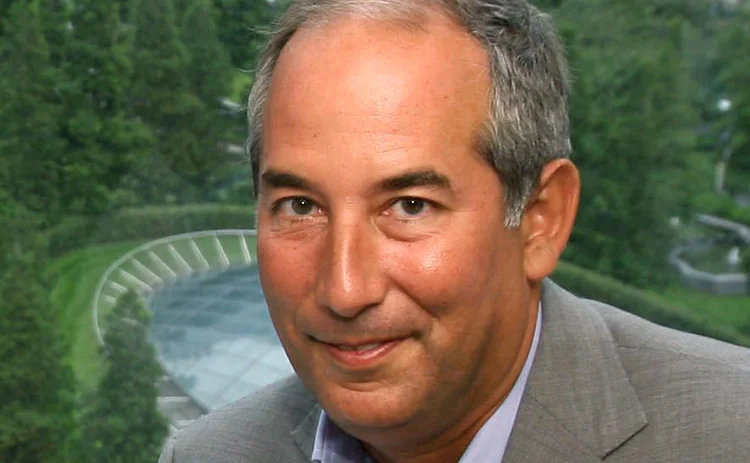Thomson Reuters 'Fast Forwards' from Glocer to Smith

Less than six months after a reorganization and cull of senior executives, Thomson Reuters announced on Thursday that chief executive Tom Glocer will depart the vendor at the end of this year, to be replaced by former Thomson Corp. veteran and current chief operating officer Jim Smith, as part of an organizational restructure that will see the company reorganized into five business divisions.
Glocer, who joined the vendor in 1993 as deputy general counsel before becoming president of Reuters Latin America and Reuters America, then CEO of Reuters in 2001 and CEO of Thomson Reuters following the acquisition of Reuters by Thomson Corp. in 2008, will “retire” from his role and the Thomson Reuters board on Dec. 31, according to a statement.
The new divisional structure sees the creation of a Financial and Risk division, to be led by David Craig, currently president of the vendor’s Governance Risk and Compliance business, and a Global Growth Organization, to be led by Shanker Ramamurthy, currently head of the vendor’s Financial Professionals and Marketplaces business, which combined the former Sales & Trading and Investment & Advisory units earlier this year. The other divisions are Legal, Intellectual Property & Science, and Tax & Accounting.
The move is the latest in a series of high-level changes at Thomson Reuters designed to “flatten” its structure, simplify its business model, create synergies and accelerate growth, which included letting go a swathe of senior executives earlier this year, including Devin Wenig, then-CEO of the vendor’s Markets division, which comprised its financial data and news business (IMD, July 22). Following the departures, Glocer took on overall responsibility for the Markets division.
Glocer is credited with turning around Reuters with his “Fast Forward” cost-cutting initiative following a historic net loss after taking the reins (IMD, Feb. 24, 2003), and was twice named Executive of the Year in the Inside Market Data Awards. But sources say Glocer had increasingly come under pressure from the Thomson family—which still owns a majority stake in the vendor via its family trust, The Woodbridge Company—to increase revenues at the vendor, whose new flagship desktop Eikon has struggled to gain traction against rival Bloomberg, and that it had recently appeared that Smith was being groomed to take the reins as CEO. The vendor’s share price has fallen from highs of nearly $42 in February to $26.88 at close on Thursday.
A Thomson Reuters spokesperson cites the vendor’s third quarter results, where it reported 32,000 Eikon sales—including 27,000 migrations and 5,000 new positions, with 8,000 active users—but declines to comment further on the changes.
Smith, who takes over as CEO on Jan. 1, joined Thomson Newspaper Group in 1987, rising to head of operations for the US prior to the Newspaper Group’s sale in 2000. He then joined Thomson Corp. as executive vice president, ultimately becoming CEO of Thomson Corp. and then CEO of Thomson Reuters’ Professional division, which comprised the former Thomson Corp.’s legal, tax and accounting, scientific and education businesses.
Only users who have a paid subscription or are part of a corporate subscription are able to print or copy content.
To access these options, along with all other subscription benefits, please contact info@waterstechnology.com or view our subscription options here: http://subscriptions.waterstechnology.com/subscribe
You are currently unable to print this content. Please contact info@waterstechnology.com to find out more.
You are currently unable to copy this content. Please contact info@waterstechnology.com to find out more.
Copyright Infopro Digital Limited. All rights reserved.
As outlined in our terms and conditions, https://www.infopro-digital.com/terms-and-conditions/subscriptions/ (point 2.4), printing is limited to a single copy.
If you would like to purchase additional rights please email info@waterstechnology.com
Copyright Infopro Digital Limited. All rights reserved.
You may share this content using our article tools. As outlined in our terms and conditions, https://www.infopro-digital.com/terms-and-conditions/subscriptions/ (clause 2.4), an Authorised User may only make one copy of the materials for their own personal use. You must also comply with the restrictions in clause 2.5.
If you would like to purchase additional rights please email info@waterstechnology.com
More on Emerging Technologies
Tape bids, algorithmic trading, tariffs fallout and more
The Waters Cooler: Bloomberg integrates events data, SimCorp and TSImagine help out asset managers, and Big xyt makes good on its consolidated tape bid in this week’s news roundup.
DeepSeek success spurs banks to consider do-it-yourself AI
Chinese LLM resets price tag for in-house systems—and could also nudge banks towards open-source models.
Standard Chartered goes from spectator to player in digital asset game
The bank’s digital assets custody offering is underpinned by an open API and modular infrastructure, allowing it to potentially add a secondary back-end system provider.
Saugata Saha pilots S&P’s way through data interoperability, AI
Saha, who was named president of S&P Global Market Intelligence last year, details how the company is looking at enterprise data and the success of its early investments in AI.
Data partnerships, outsourced trading, developer wins, Studio Ghibli, and more
The Waters Cooler: CME and Google Cloud reach second base, Visible Alpha settles in at S&P, and another overnight trading venue is approved in this week’s news round-up.
Are we really moving on from GenAI already?
Waters Wrap: Agentic AI is becoming an increasingly hot topic, but Anthony says that shouldn’t come at the expense of generative AI.
Cloud infrastructure’s role in agentic AI
The financial services industry’s AI-driven future will require even greater reliance on cloud. A well-architected framework is key, write IBM’s Gautam Kumar and Raja Basu.
Waters Wavelength Ep. 310: SigTech’s Bin Ren
This week, SigTech’s CEO Bin Ren joins Eliot to discuss GenAI’s progress since ChatGPT’s emergence in 2022, agentic AI, and challenges with regulating AI.








